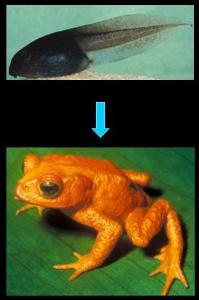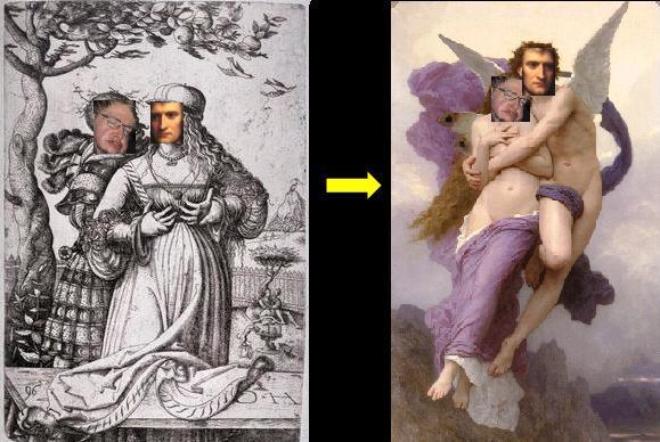| Adapted for the Internet from: Why God Doesn't Exist |
| How a theory morphs into a hypothesis |
It has long been tradition in the religion of Mathematical Physics that a theory becomes a fact after it is
accepted by the majority. A ‘certified’ theory is simply one for which no one believes that there is yet a
fatal flaw. Until someone does falsify it to the satisfaction of the many, presenters temporarily treat them
as if they were established facts. A theorist assumes that the theory is true because most experts believe
that there are no conclusive arguments to overthrow it. This gives a theorist confidence to convert such
theory into a statement of the facts and build new theories upon it.
- “ Any physical theory is always provisional, in the sense that it is only a hypothesis:
you can never prove it. No matter how many times the results of experiments agree
with some theory, you can never be sure that the next time the result will not contradict
the theory. On the other hand, you can disprove a theory by finding even a single
observation that disagrees with the predictions of the theory.” (p. 10) [1]
What these conventions really reveal is the process by which a theory stealthily morphs into a statement
of facts (i.e., assumptions, hypotheses). It explains why this metamorphosis utterly confuses the
philosophers. What is occurring is that a theory in one presentation is taken so much for granted that it
is effectively used as part of the hypothesis of another. Here are a couple of noteworthy examples:
A theory is a particular explanation for a particular phenomenon. A theory may answer questions beginning
with how (causal) or with why (reason, purpose). Once accepted by the majority, a theory doesn’t become
knowledge. It can at best become a hypothesis that is used as a foundation to generate new theories.


| Fig. 1 Theory morphing into hypothesis |
|
- Module main page: A relativist thinks that a theory becomes a fact when he votes for it
Pages in this module:
- 1. What is a theory?
2. This page: How the mathematicians morph a theory into a hypothesis
3. What is a table?
and Money, [7] had the following structure:
Theory: Aggregate demand explains variations in large-scale economic activity (macroeconomics) Contemporary theorists take Keynes’s macroeconomic theory for granted. They don’t attempt to prove macroeconomic mechanisms any more:
us find it hard to recognize what the argument is all about. These days it is taken for granted that the government has a responsibility to stimulate the economy out of recession, at least to the extent of reducing interest rates, and modestly applying the brakes during over-exuberant expansion. It is accepted that two of the factors exacerbating economic downturns are the fearfulness of investors in the face of declining corporate earnings and the reluctance of consumers to put down money they suspect they may need later if they are laid off from their jobs. It was not always so.” [9] Instead, they invoke Keynes’ macroeconomic model to formulate the statement of the facts, and use this foundation to explain another theory, for example, microeconomic effects:
theory) [10]
reach of our macroeconomic models?” [11] “ This paper is not concerned with energy efficiency at the microlevel, that is by the individual consumer or firm, but at the macro-level, that is at the aggregate or national level. Its question is ‘does the promotion of energy efficiency (at the micro- level) reduce energy consumption (at the macro-level)’? It presents arguments that the precise effect of energy efficiency decisions at the microeconomic level is impossible to quantify at the macroeconomic level.” [12] |
In 1916, Schwarzschild theorized that a massive star would undergo total gravitational
collapse and convert into a black hole. [2] The black hole was a theory for a great part
of the 20th Century and did not really become part of the mainstream religion of relativity
until after the 60s. At that point, relativists began to convince each other that a singularity
was the only mathematically viable end for a massive star. The mathematicians had
already accepted quantum magic and irrational relativity, so why not the black hole too?
Thus, the black hole entered the mainstream. Did this make Schwarzschild’s black hole
a fact? No. The theory morphed into a statement of the facts, into an assumption.
Contemporary theorists no longer explain nor justify to their colleagues what a black
hole is or how it is created. Today, the establishment takes the black hole for granted.
The modern ‘physicists’ assume (i.e., hypothesize) that black holes exist and use them
as a basis to persuade their colleagues of something else, for example, that a black hole
can create particles. [3] Kuhn referred to this process of converting theories into
hypotheses as a paradigm shift. [4]
collapse and convert into a black hole. [2] The black hole was a theory for a great part
of the 20th Century and did not really become part of the mainstream religion of relativity
until after the 60s. At that point, relativists began to convince each other that a singularity
was the only mathematically viable end for a massive star. The mathematicians had
already accepted quantum magic and irrational relativity, so why not the black hole too?
Thus, the black hole entered the mainstream. Did this make Schwarzschild’s black hole
a fact? No. The theory morphed into a statement of the facts, into an assumption.
Contemporary theorists no longer explain nor justify to their colleagues what a black
hole is or how it is created. Today, the establishment takes the black hole for granted.
The modern ‘physicists’ assume (i.e., hypothesize) that black holes exist and use them
as a basis to persuade their colleagues of something else, for example, that a black hole
can create particles. [3] Kuhn referred to this process of converting theories into
hypotheses as a paradigm shift. [4]
The Paradigm shift
- (Theory in Presentation 1 becomes Hypothesis in Presentation 2)
- ________________________________________________________________________________________
- Copyright © by Nila Gaede 2008
